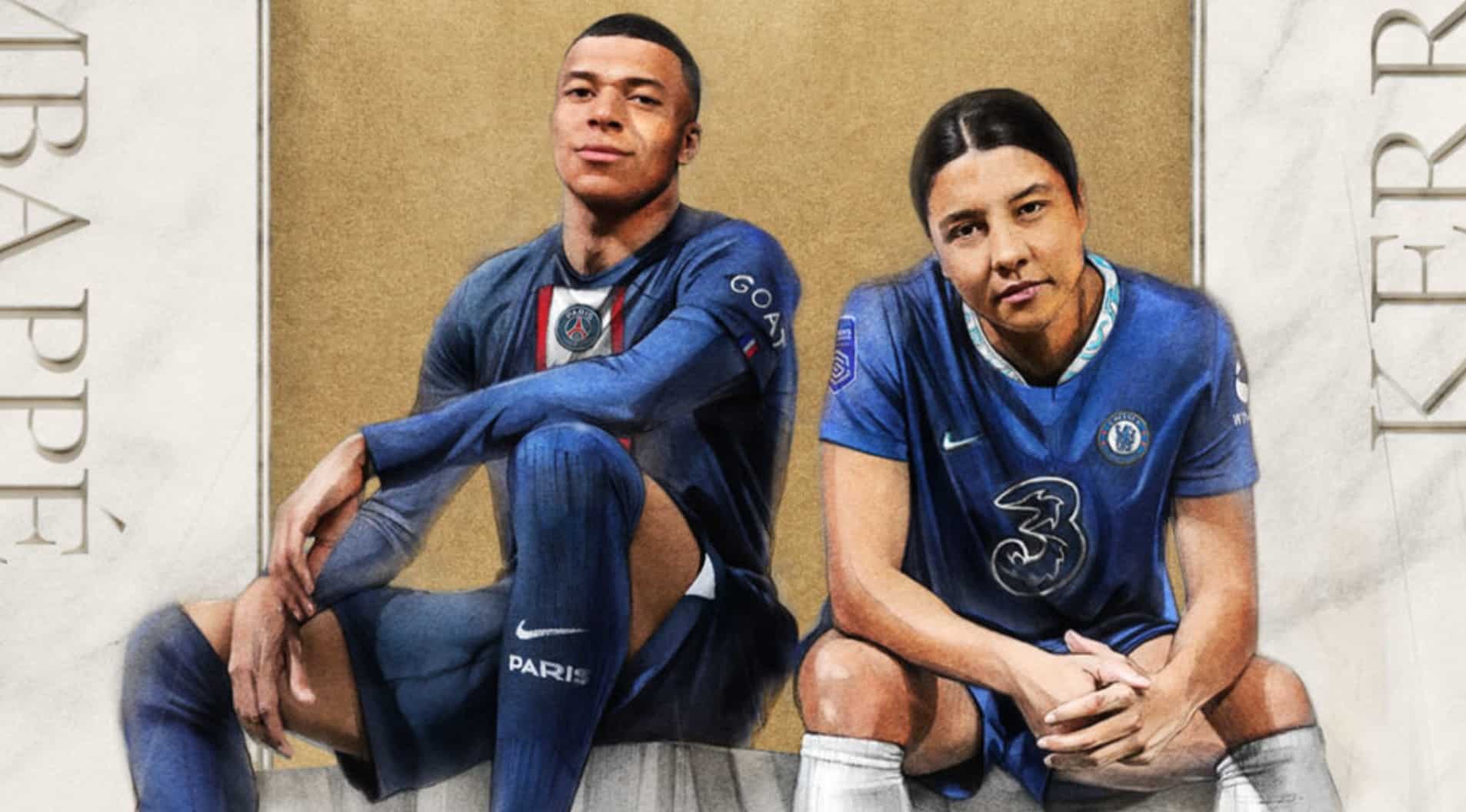Women’s football has been on a rapid rise in popularity over the past decade or so, with EA Sports’ FIFA / FC games playing a notable role in its growth. Although plenty of factors are at play – from expansive media coverage to abundant brand endorsements – the sport has experienced significant growth since EA Sports first introduced women in its award-winning franchise.
Viewing figures and attendances have skyrocketed in recent years, and female footballers have secured significant sponsorship deals and high-profile endorsements. GamesHub takes a deep dive into how the world’s most popular football video game has helped to fuel the evolution of women’s football.
EA Sports’ Influence on Women’s Football
Mia Hamm’s Nintendo 64 Game Opens the Gates

Before the FIFA franchise was even a hit, the first game to predominantly feature a female figure was Mia Hamm 64 Soccer. Hamm was a major name in women’s football at the time after guiding the United States women’s national soccer team to FIFA World Cup glory a few months before the game’s release.
In the United Kingdom, the game was known as Michael Owen’s WLS 2000, releasing on Nintendo 64 in September 1999. SouthPeak Interactive was responsible for the Mia Hamm version, which only released in North America.
Mia Hamm Soccer 64 was one of the first sports games to feature female athletes. The game sold over 42,000 copies in the US, despite featuring just 18 club teams and 32 national sides. Nevertheless, the title brought women’s football into the gaming limelight during an important time for the sport.
FIFA 16: The Real Birth of Women’s Football in Video Games
EA spearheaded the new generation of women’s football games by adding female teams to FIFA 16 in 2015. Players could choose from 12 national teams, including China, England, and United States. This was a seminal moment in the franchise’s history, finally uniting men and women into one football game.
Although FIFA 16 cannot be solely proclaimed for the rise in interest in women’s football, the game unquestionably played a huge role. Not only did it allow fans to play as their favourite women’s national teams, but it also gave enormous real-life exposure to the game’s major players.
The FIFA franchise is renowned for its unrivalled authenticity, and 11 of the 12 national sides had realistic facial scanning and motion capturing. For many gamers, it was their first time seeing the likes of Megan Rapinoe, Louisa Necib, and Marta.
You can play as any of the 12 national teams in single-player modes, such as ‘Match Day’ and offline tournaments. However, you could not mix female and male players, and the game modes were limited compared to today.
FIFA 16 took the first real leap forward with its representation of women’s football. The game laid down a marker and paved the way for even more milestones for the women’s game.
A few months before FIFA 16 was released, the 2015 Women’s World Cup took place in Canada. According to a 2016 ESPN poll, 50% of FIFA players developed some kind of interest in the sport thanks to EA Sports’ hit. The World Cup and FIFA 16 both contributed to the latest rise in women’s football popularity.
FIFA 23: Kerr the Cover Star

Sam Kerr is regarded as one of the best female players of all time. The Chelsea striker was in her absolute prime in 2022, and she was rightly announced as a cover star for the Ultimate Edition, alongside Kylian Mbappe. FIFA 23 was the last football game to be released under the FIFA branding.
Although Alex Morgan and Christine Sinclair had appeared on the front cover of the US and Canadian FIFA 16 editions, respectively, FIFA 23 was the first game to feature a female player on the cover of a global edition.
This provided huge visibility for Kerr and the Chelsea women’s team. Kerr became a role model for younger female gamers and football fans, while women’s football garnered even more attention. It was another major step forward for the game’s diversity and inclusivity.
FIFA 23 added more teams from the Barclays Women’s Super League (WSL) and other leagues, while dedicated ‘HyperMotion2’ technology and authentic animations enhanced the realism. A full 2023 Women’s World Cup mode was later added.
Female Players Added to Ultimate Team
FIFA 23 was also a colossal game for women’s football, as female players were added to Ultimate Team for the first time ever. You could finally build an Ultimate Team squad with male and female players.
This enabled diverse team-building options, with female players having the same statistics and models as the men’s players, evening up the playing field. It added a new lease of life to Ultimate Team while promoting women’s football along the way.
Liga F Viewing Figures Skyrocket
Spain are blessed with talented players, and some of the best players in the latest EA FC 26 game hail from the Land of Cervantes. Alexia Putellas and Aitana Bonmati are both in the top four of the overall rating for combined men and women, while Claudia Pina’s Ultimate Card is hailed as ‘the most overpowered’ in the game thanks to her well-rounded attacking attributes.
The Spain women’s national football team won the World Cup in 2023 and finished runners-up in the 2025 UEFA Women’s Euro Championship in Switzerland. The national team’s success and the rise of women footballers in recent FC games have seen unprecedented growth in Liga F audience figures.
The TV audience exceeded 6.7 million viewers in the 2024-25 season, a whopping 90% increase compared to the 2023-24 campaign. Match attendances were up 7% and 120% higher than in the 2021-22 season, when Liga F was still a non-professional division.
The league will keep growing as Spanish football goes from strength to strength, and the exposure on FC26 and beyond will continue to increase.
Huge Increase in Viewers From the 2019 to 2023 World Cups
The 2019 Women’s World Cup was a momentous event in terms of viewing figures. The World Cup was watched by more than a billion people, a record audience at the time.
The World Cup final between United States and Netherlands was watched live by 260 million people, more than doubling the figures for the 2015 USA-Japan final. Overall, the global viewing figures saw an increase of 30% on the World Cup held in Canada four years prior.
The 2019 figures were impressive, but they were dwarfed by the World Cup in New Zealand in 2023. Over two billion tuned in for the 2023 edition. In the showpiece final in Sydney, a 75,000-capacity crowd watched the Spaniards edge past England by a goal to nil.
Streaming and social media played a big part, with 895.38 million watching on digital platforms, while 684.42 viewers watched on various social platforms. On FIFA socials alone, there were 3.5 billion total impressions, an increase of 123% versus 2019.
The leap in viewing figures coincided with the FIFA 23 Mobile version, which added women’s clubs for the first time. The female user base jumped from a third to nearly 45% on the mobile edition.
WSL – Massive Leap in TV Figures & Attendances
The Women’s Super League is widely regarded as the greatest female football division in the world. The planet’s best players want to play in England’s top tier, and the league has been growing in stature over the past few years.
The WSL was added to FIFA 23, with all clubs and players being available to use. This was huge exposure for the women’s game, backed up by the tremendous upswing in viewing figures.
Sky TV in the UK is broadcasting 118 WSL matches starting from the 2025-26 season. The BBC is showing games, while the WSL’s YouTube channel is offering live fixtures to some overseas countries. Viewing figures peaked after England’s Euro success in 2022 and their World Cup run in 2023.
The WSL is hoping to get the figures back on the rise after a slight drop-off. There was a 35% decrease for the 2024-25 campaign, but the numbers are expected to rise once again after England’s UEFA Women’s Euro 2025 success in Switzerland.
The WSL is set to be a part of FC games for the foreseeable future, which will continue to positively impact the viewing figures. More leagues are likely to be added and will benefit immensely from EA Sports’ global exposure.
Social Media Influencers
Several female footballers have ridden the recent wave and used their own social media platforms to enhance their brands and reputations. Alisha Lehmann is one of the best players in the game, and the Swiss international is widely considered the biggest social media influencer in women’s football.
Lehmann has over 16 million followers across her platforms. The forward, now playing for Como in Italy, featured in the WSL for West Ham United, Everton, and Aston Villa. She has been in several FC games, receiving an 81 overall rating while at Juventus in FC25.
Leah Williamson is one of many England stars with a huge social media following. After the Lionesses’ recent rise to the top, the likes of Lucy Bronze, Alex Greenwood, Beth Mead, and Chloe Kelly have blown up online. After her front cover appearance in FIFA 23, Australia captain Sam Kerr saw a huge boost in her social media following.
Football Manager 26 Introduces Women for the First Time
For the first time in the franchise’s history, Sports Interactive has added women’s leagues, teams, and players to the latest Football Manager release. This is a huge moment for women’s football and FM, offering players the chance to manage female clubs for the first time.
This further promotes equality in the beautiful game, increasing visibility while giving players more choice to use female footballers in mainstream video games.
Can More Be Done to Increase Viewership and Visibility?
Although the inclusion of women’s football in major games is encouraging, more can be done. For starters, it took 10 years for Football Manager to join FC, and there are nowhere near as many leagues, clubs, and stadiums when compared to the men’s version of the games.
A dedicated women’s title could be huge, and making females the primary focus rather than just an add-on or afterthought would be a giant leap forward. Gaming developers could also work closer with lower-league clubs to include smaller women’s teams and divisions in their big releases.
How Video Games Are Crucial for Women’s Football Going Forward
Giving new fans the opportunity to experience women’s football in video games is crucial for the sport going forward. Since women were introduced to FIFA / FC a decade ago, the game has been on a monumental rise.
Gaming, in general, is a great way to introduce people to new genres and ideas, and EA Sports (and now Sports Interactive) is playing a pivotal role in the ongoing development of women’s football.





